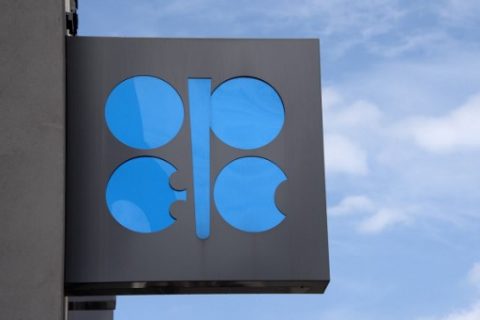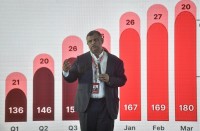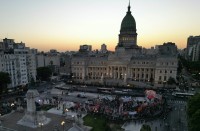
by Simon Sturdee and Joseph Sotinel
Agence France Presse
VIENNA, Austria (AFP) — Oil producers within and outside the Organization of Petroleum Exporting Countries agreed on Thursday to extend output cuts into 2018 to ease a global supply glut and support the price of crude.
Market prices for oil fell, however, because of disappointment that there was no decision to deepen the cuts in the face of rising United States output, but also in profit-taking following recent gains.
“We considered various scenarios from six to nine to 12 months and we even considered options for higher cuts,” Saudi Arabia’s Energy Minister Khaled al-Falih said after a meeting of 24 countries at OPEC headquarters in Vienna.
“All indications are solid that a nine-month extension is the optimum, and should bring us to within the five-year average of inventories by the end of the year,” Falih, who co-chaired the meeting with Russian Energy Minister Alexander Novak, told a news conference.
Amid concerns that rising US shale oil output will nullify the producers’ efforts, Falih said they were prepared “to do whatever is necessary” to stabilize the market, including by further extensions.
A joint committee of OPEC and non-OPEC countries is due to review progress in July in Russia.
Late last year the OPEC and 11 other nations, including Russia, agreed to cut production by 1.8 million barrels per day.
The aim was to reduce the massive oil inventories that had helped push down the price of oil from over $100 per barrel in 2014 to close to $25 in early 2016.
Shale revenge
While low prices were welcome news to firms and to consumers filling up their cars, they blew a hole in the finances of oil-producing nations, even rich Gulf countries, to say nothing of on-the-brink Venezuela.
Since December Brent crude, the global benchmark, has recovered to as high as $60 per barrel from about $46, although it has dipped below $50 several times.
The pact, a dramatic policy turnaround for OPEC that even had regional arch rivals Saudi Arabia and Iran see eye to eye, had been due to expire on June 30.
Last week Saudi Arabia and non-OPEC Russia, the biggest of the 24 backed the extension by nine months until March 31, 2018. This was agreed to by all 24 countries on Thursday.
A projected rise in demand for crude in the second half of 2017, due to seasonal factors, should help inventories fall, experts said.
Previously, OPEC’s strategy was to keep pumping at full tilt in order to flood the market and make life difficult for US shale oil producers, who need a higher price to make money.
This pushed scores of US firms out of business. But with the recent rise, many have returned to the market with a vengeance, and output is nearing record levels.
‘Looking a bit toothless’
Despite the resulting slower-than-hoped reduction of the global glut, as well as the prospect of rising output from Libya and Nigeria, Falih said that he was not worried.
“Shale is an important variable but we don’t believe it is going to significantly derail or affect what we are doing,” he said.
But analysts were skeptical.
“OPEC members had a chance today but bottled it. A nine-month extension isn’t enough to really lift oil prices as we’ll continue to see US shale fill the gap,” said Neil Wilson at ETX Capital.
“OPEC is looking a bit toothless now.”
The price of Brent plunged $2.02 per barrel after the announcement to $51.94 while West Texas Intermediate shed $2.05 at $49.31.
“The lack of ebullient reaction shows that the cartel (OPEC) has not managed to inspire investors with excitement. Clearly, another meeting is needed,” said Chris Beauchamp at IG.
© Agence France-Presse







